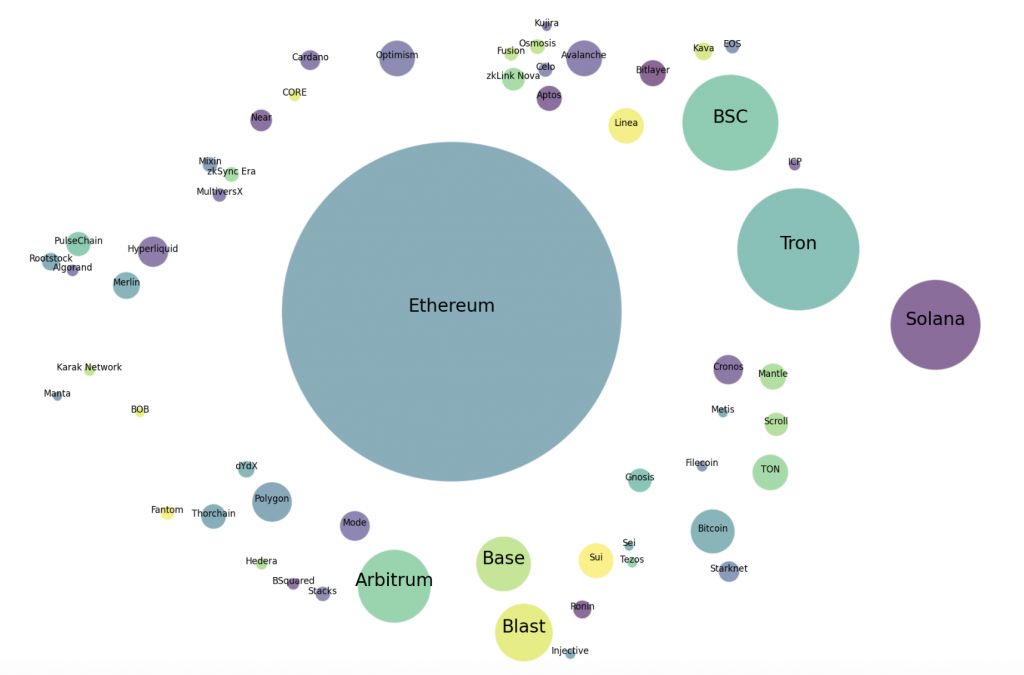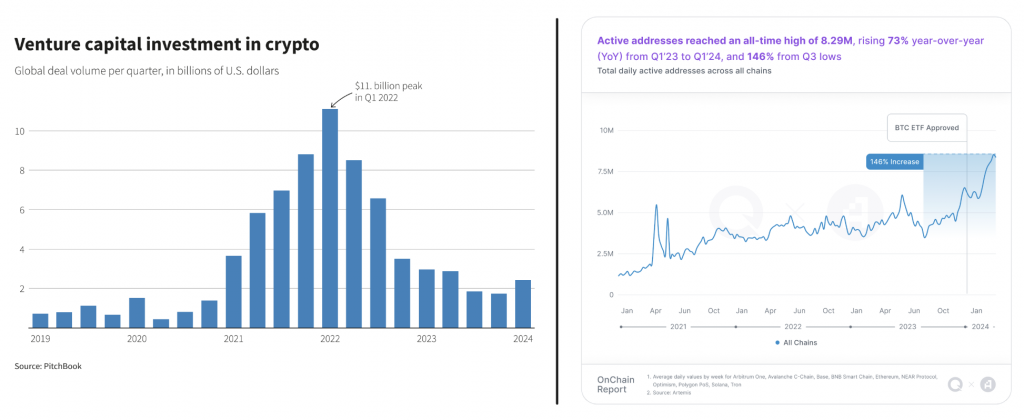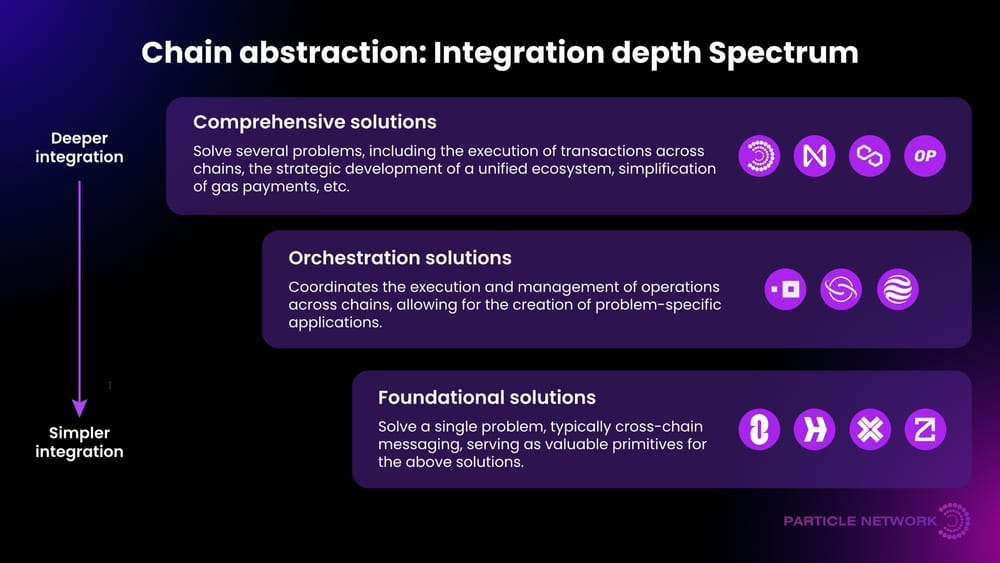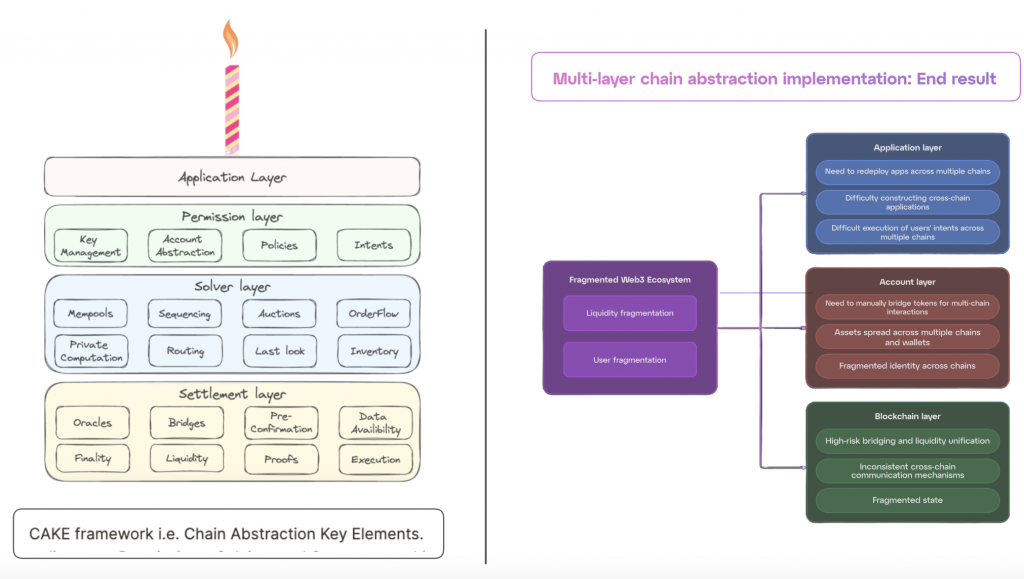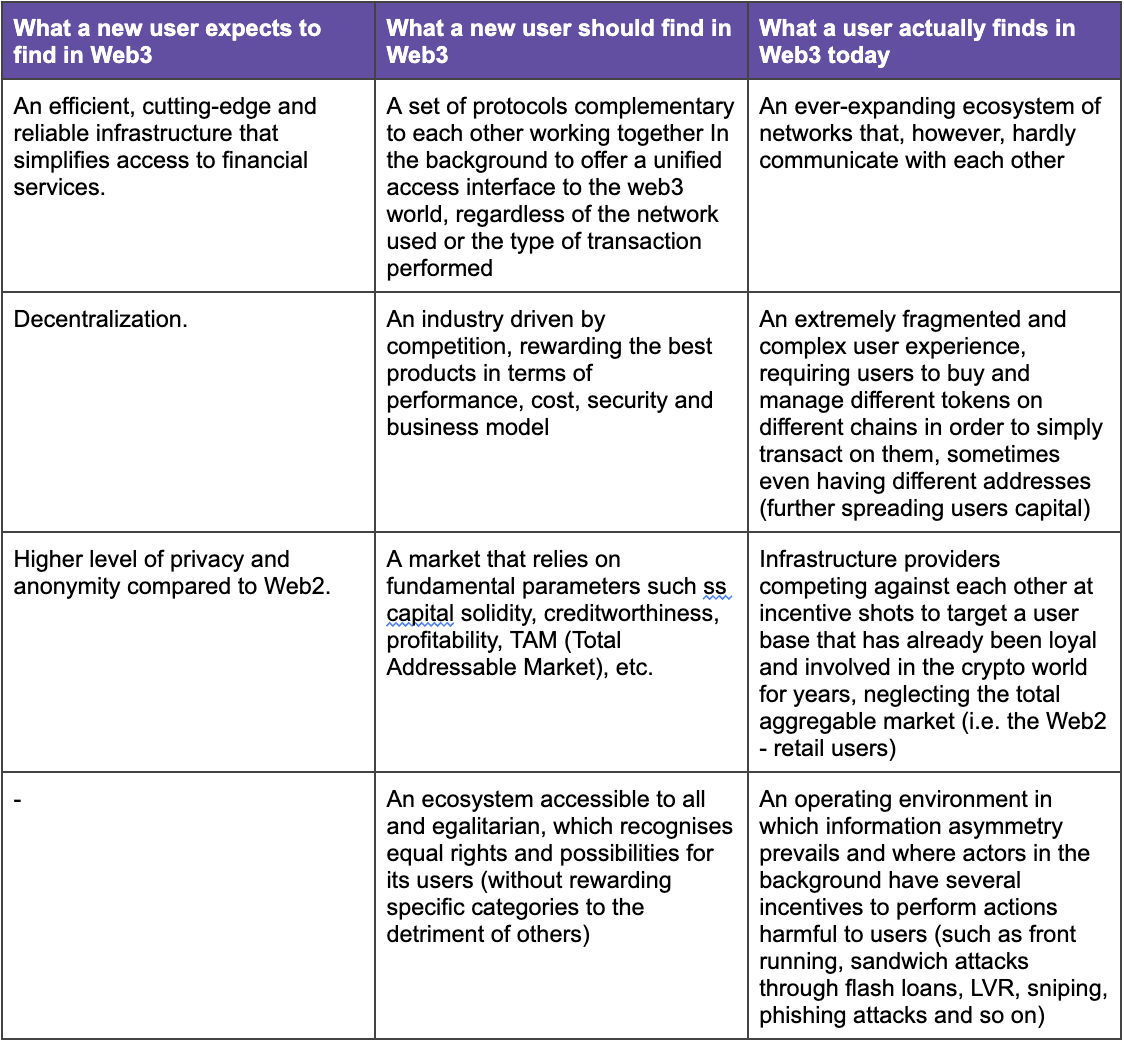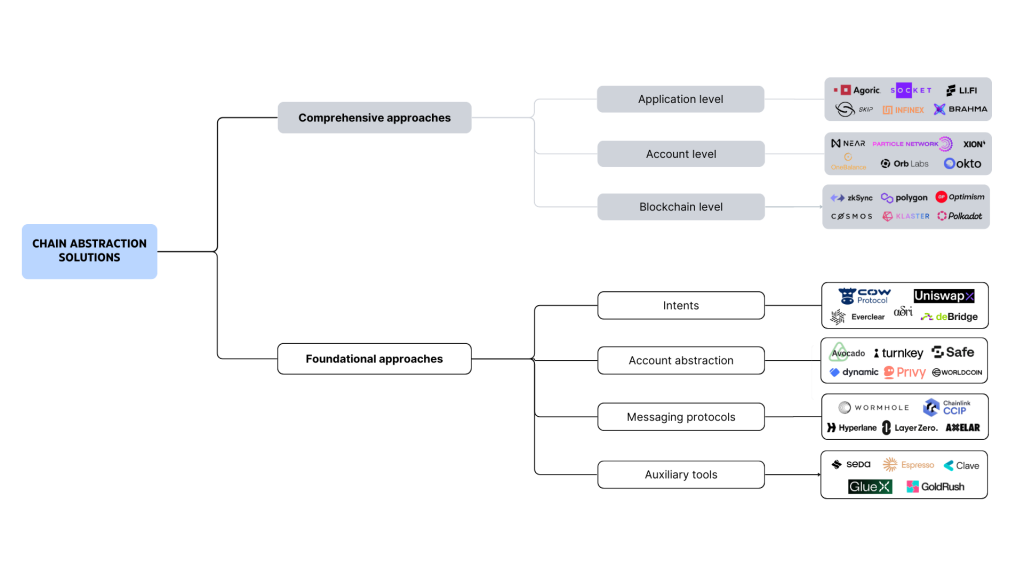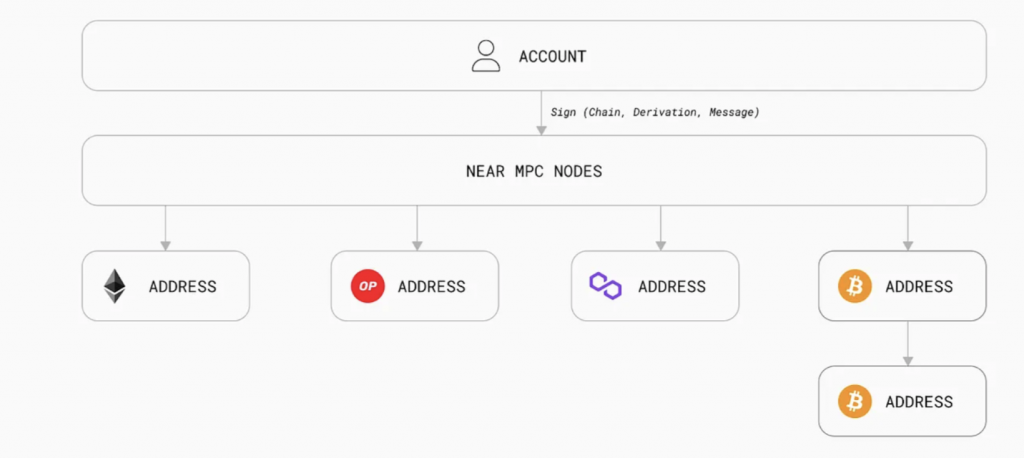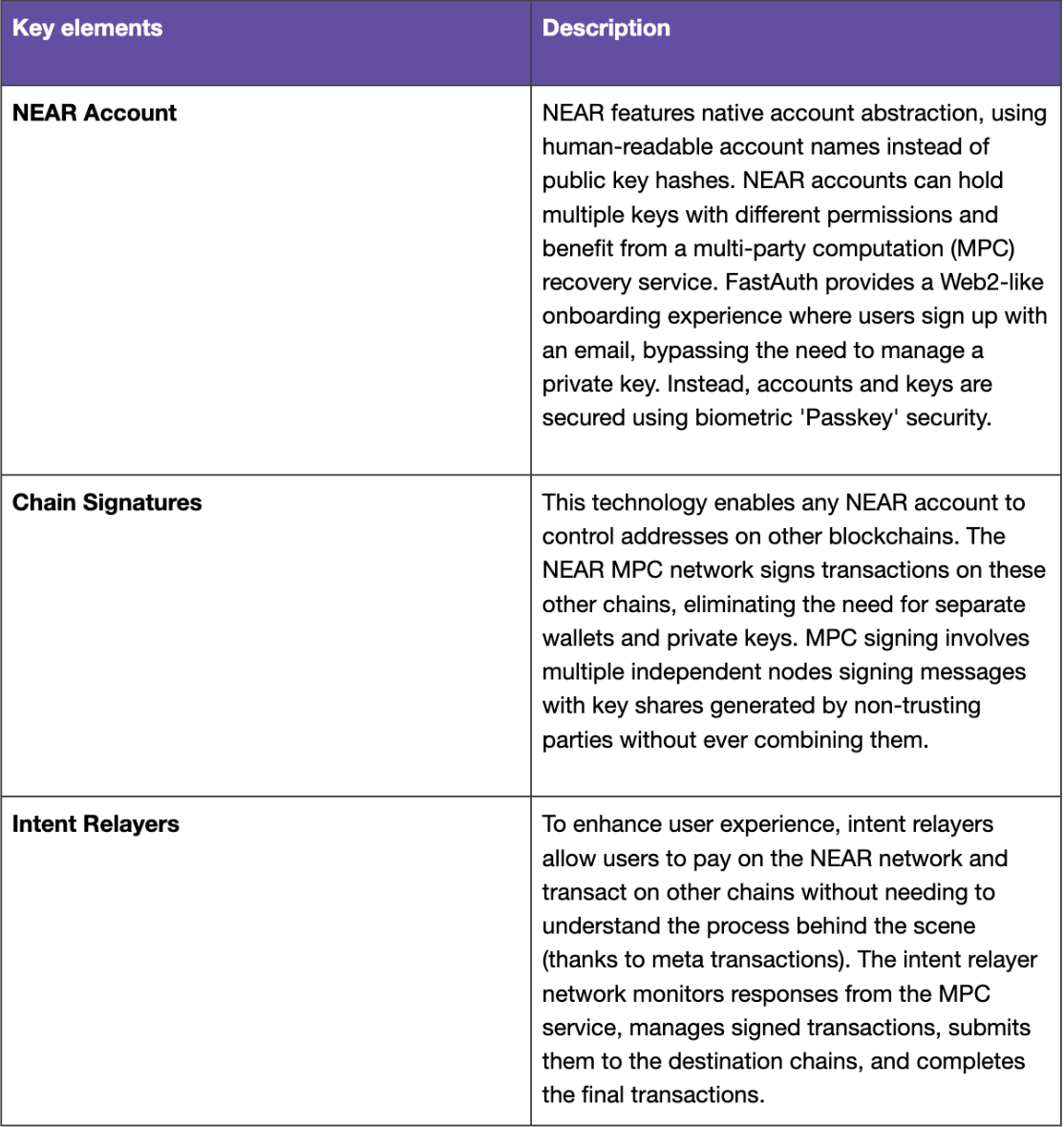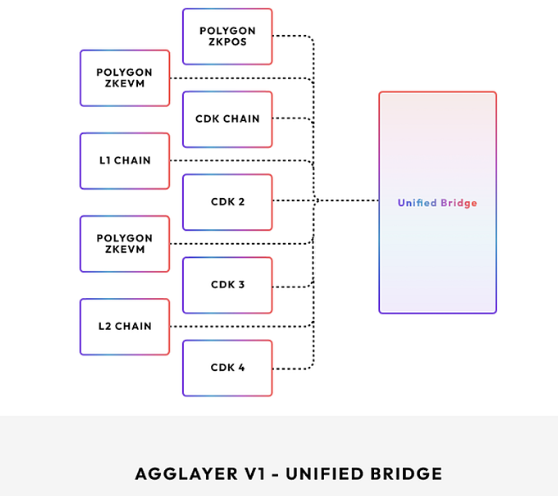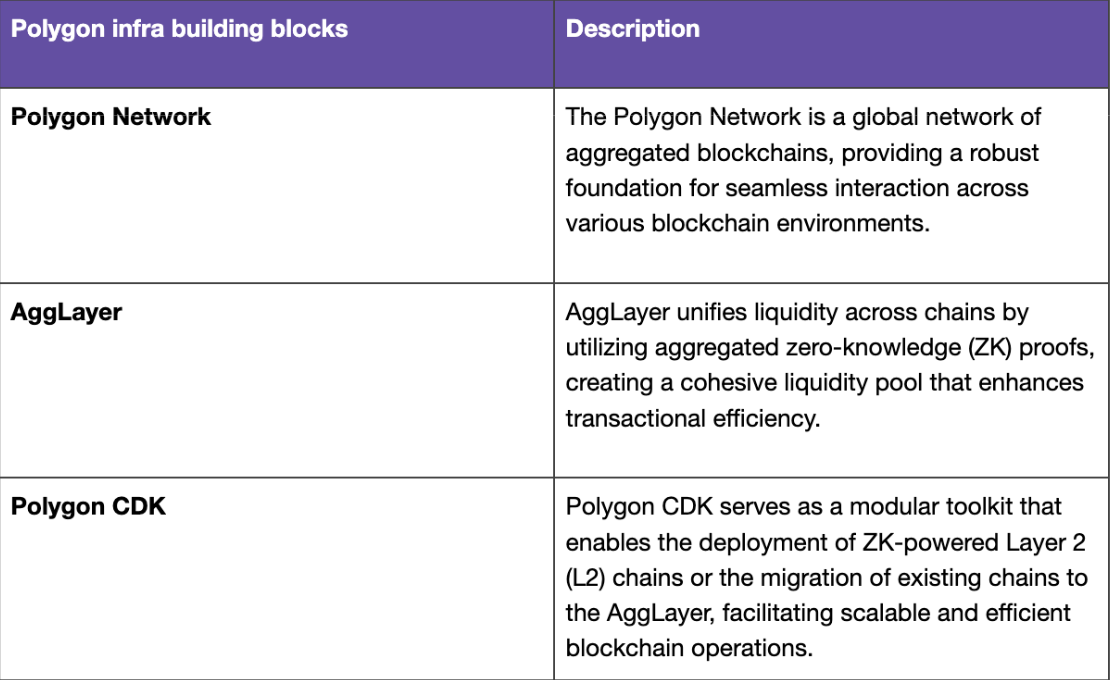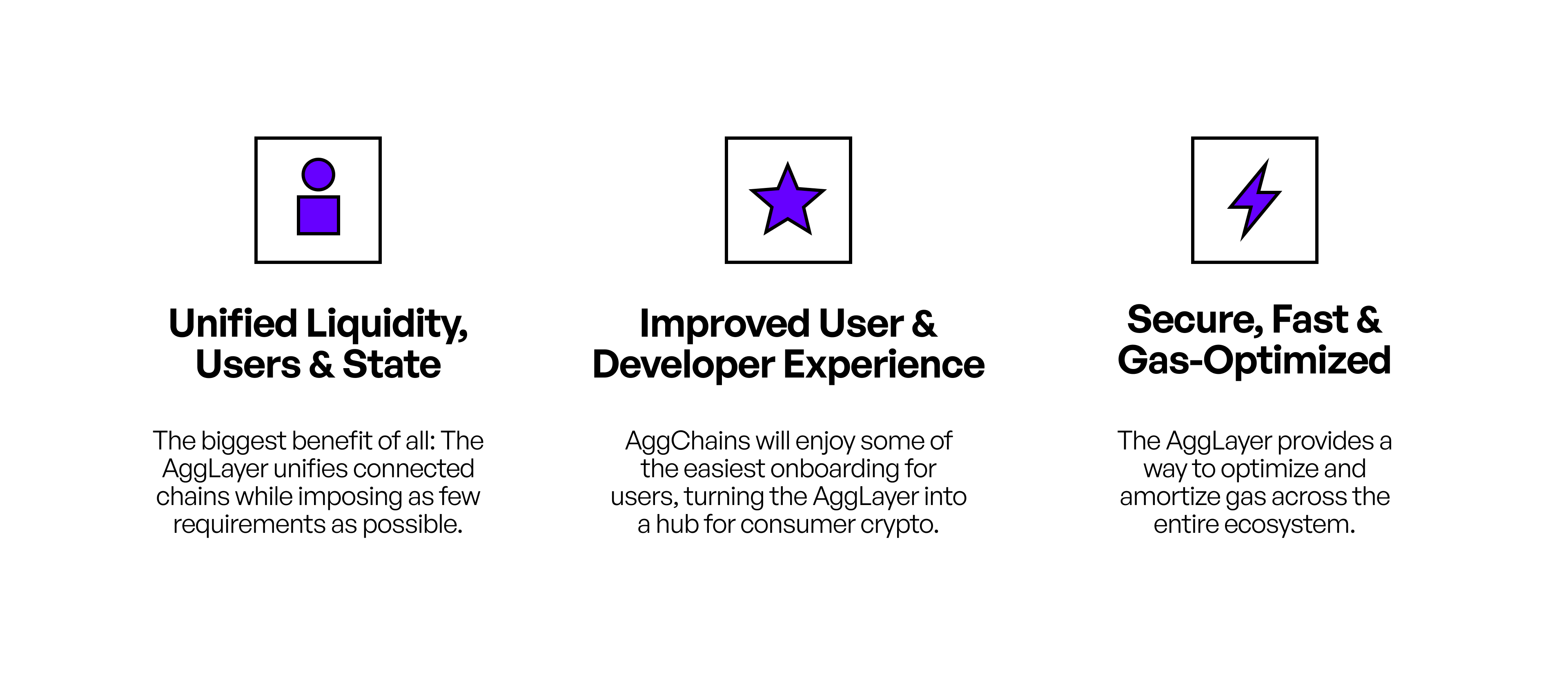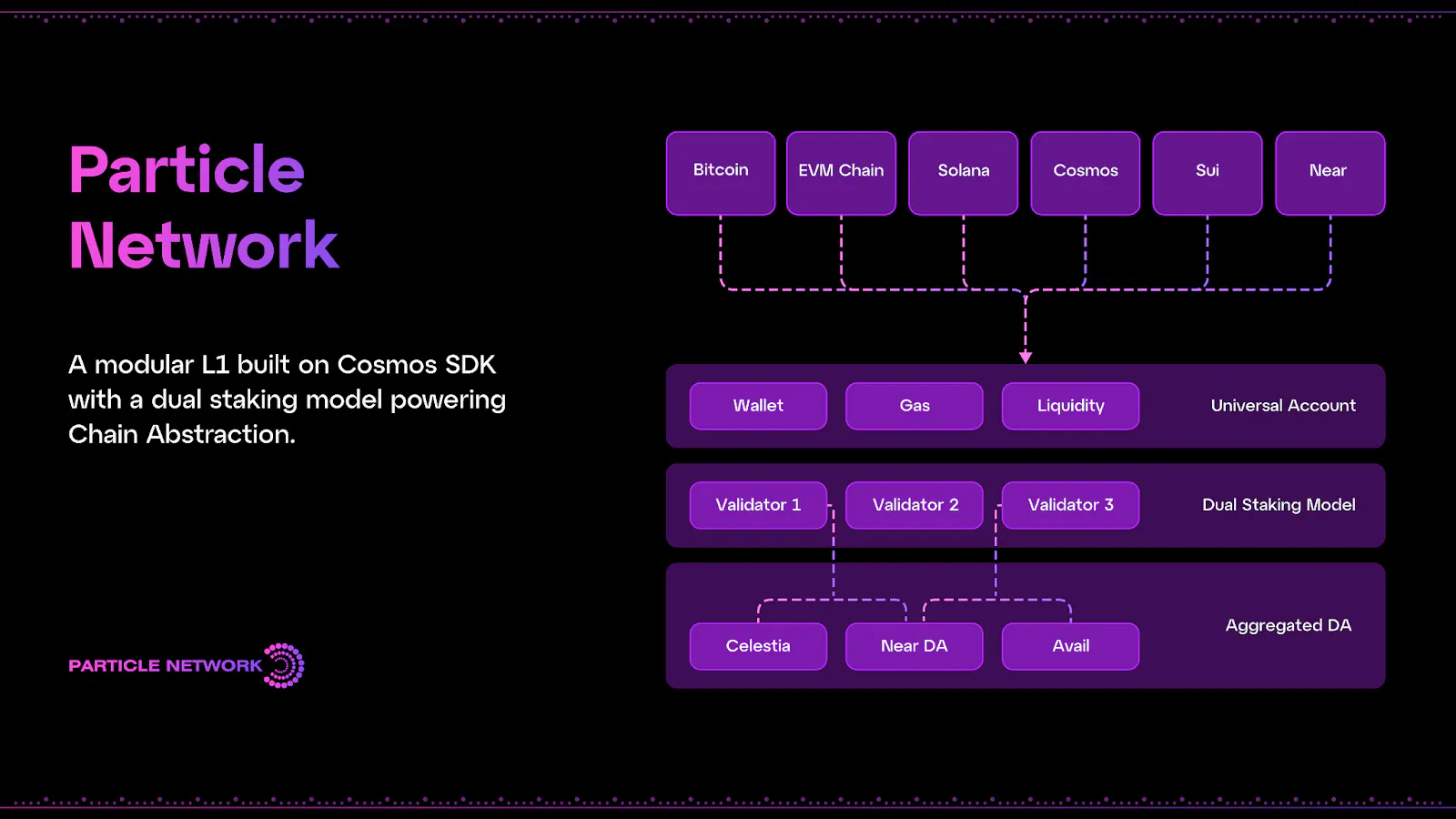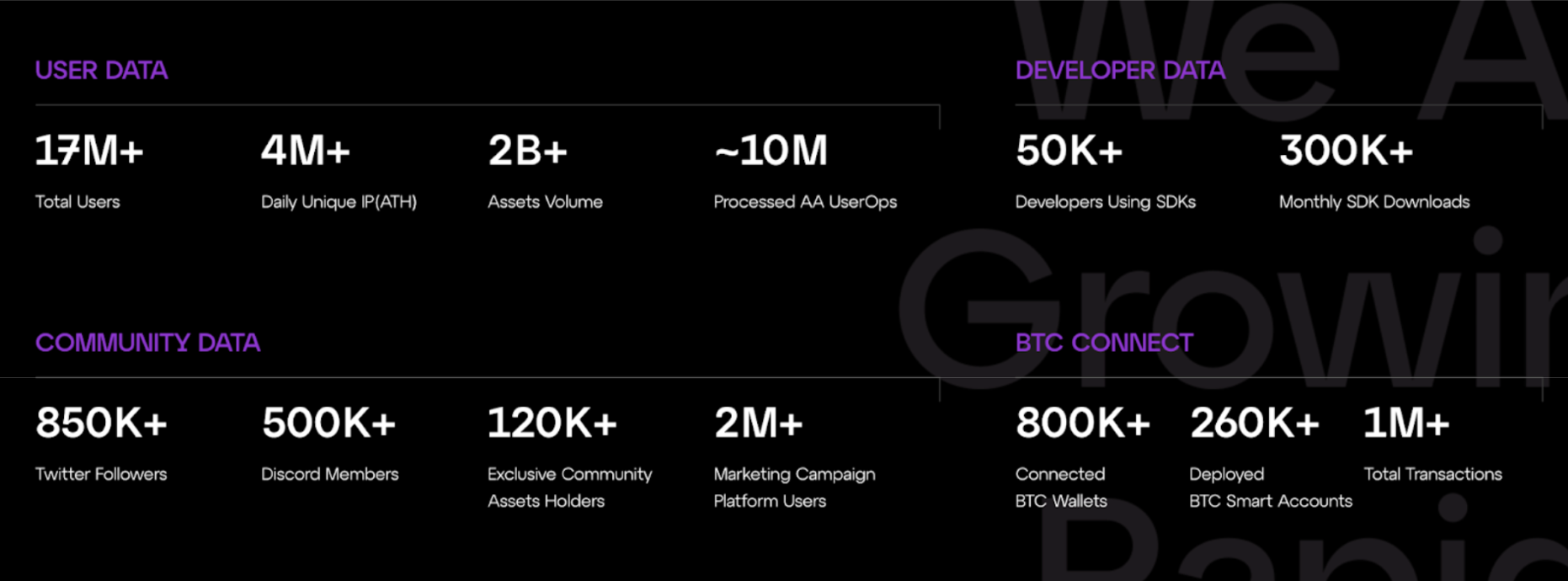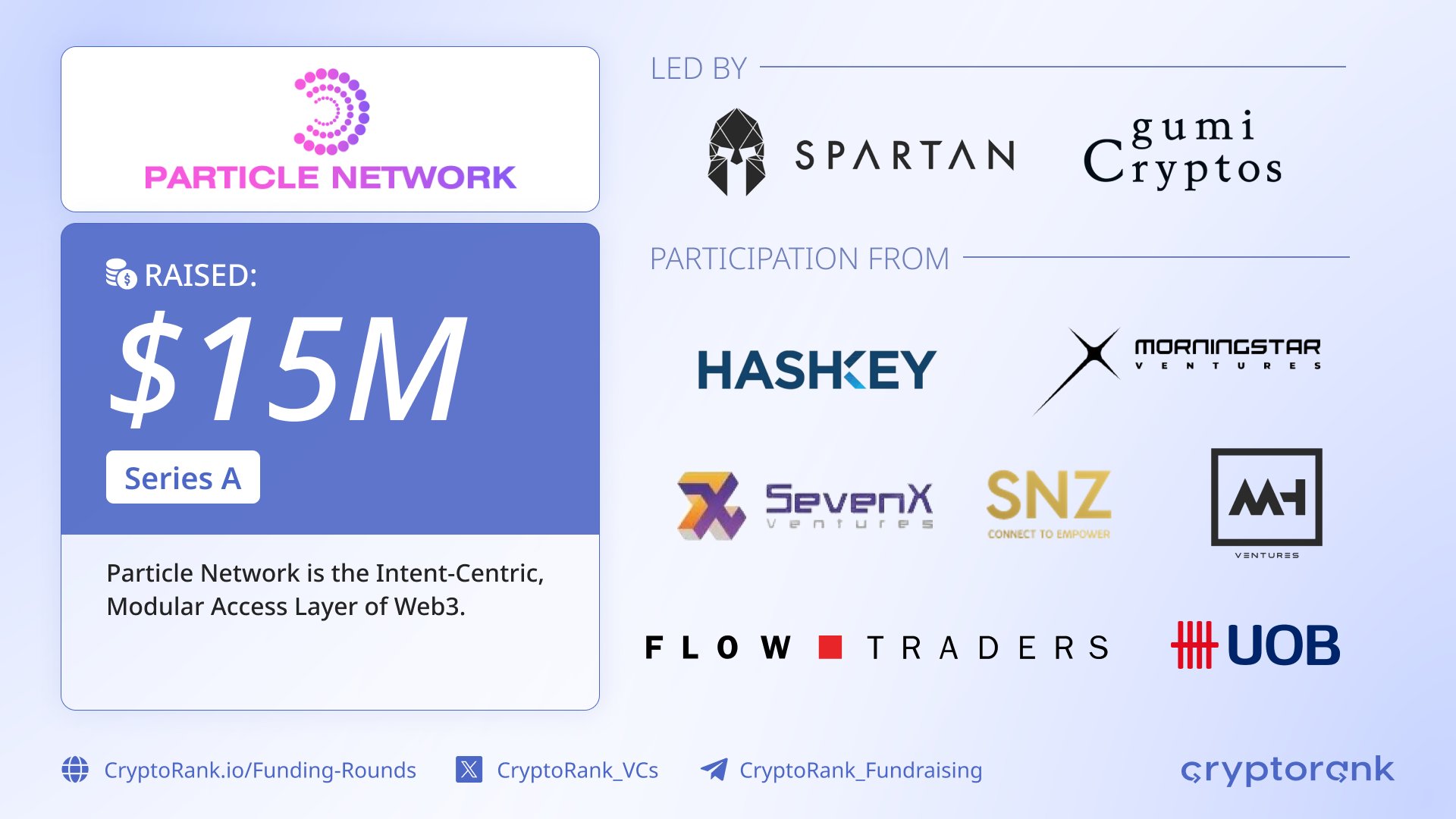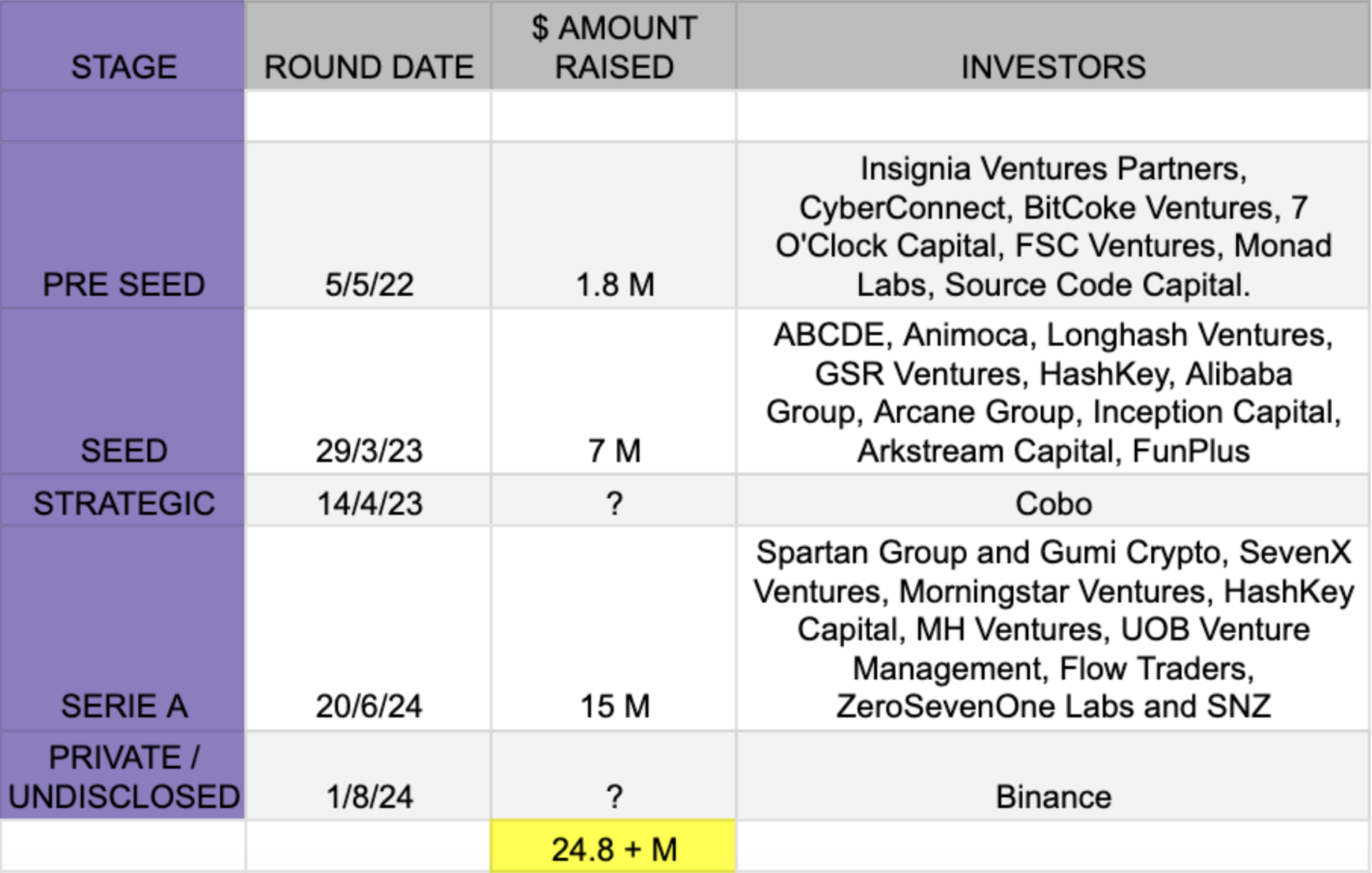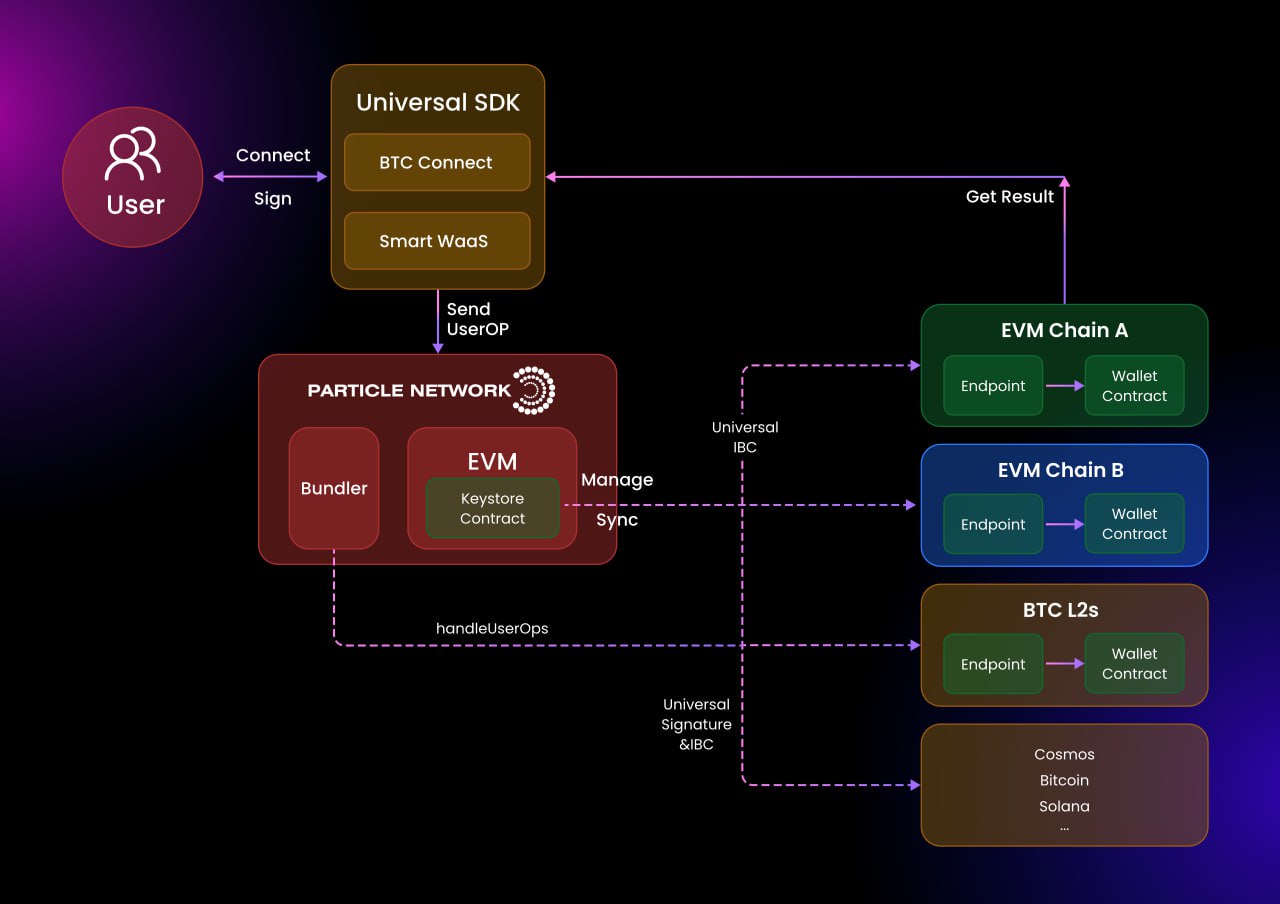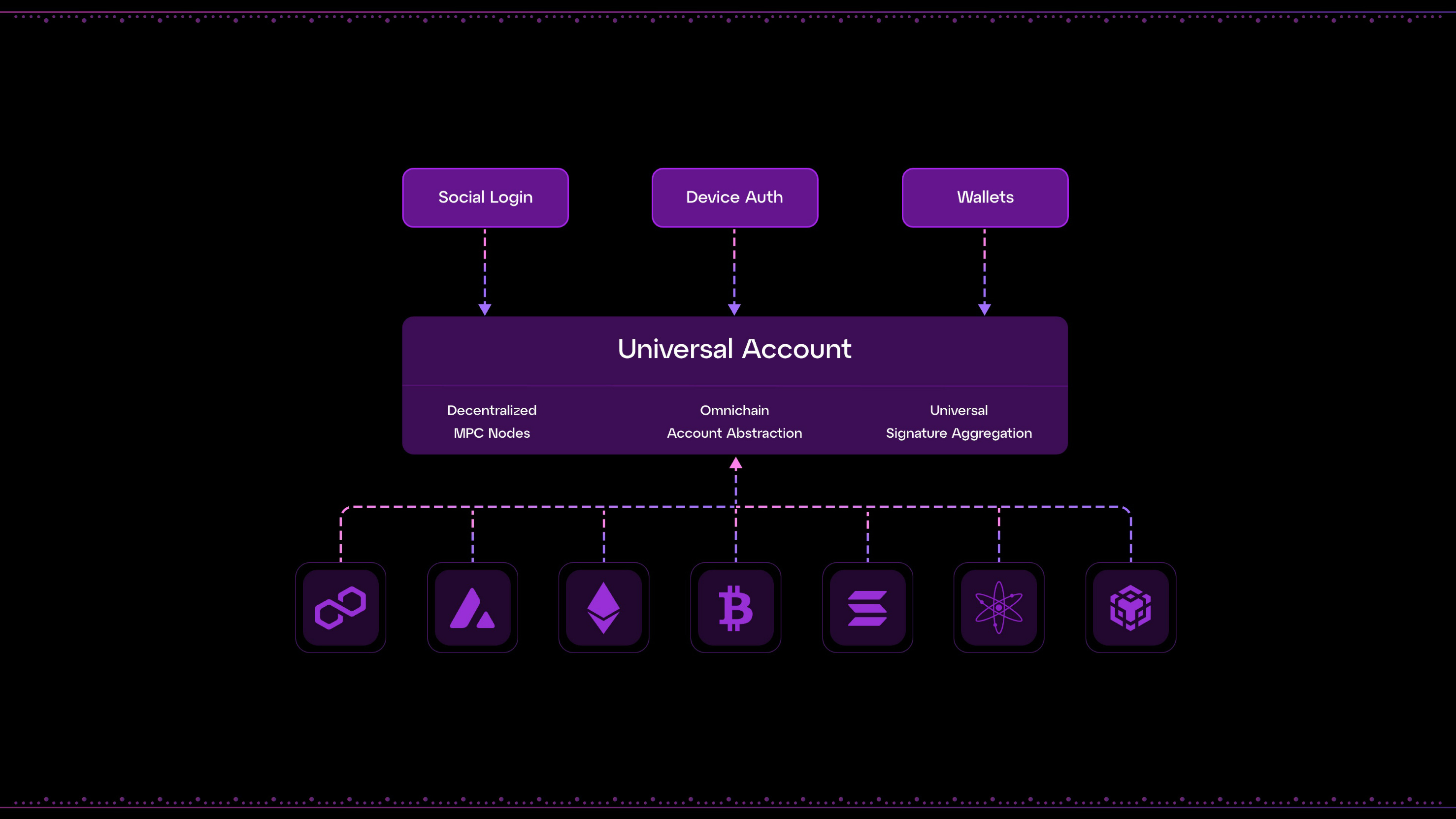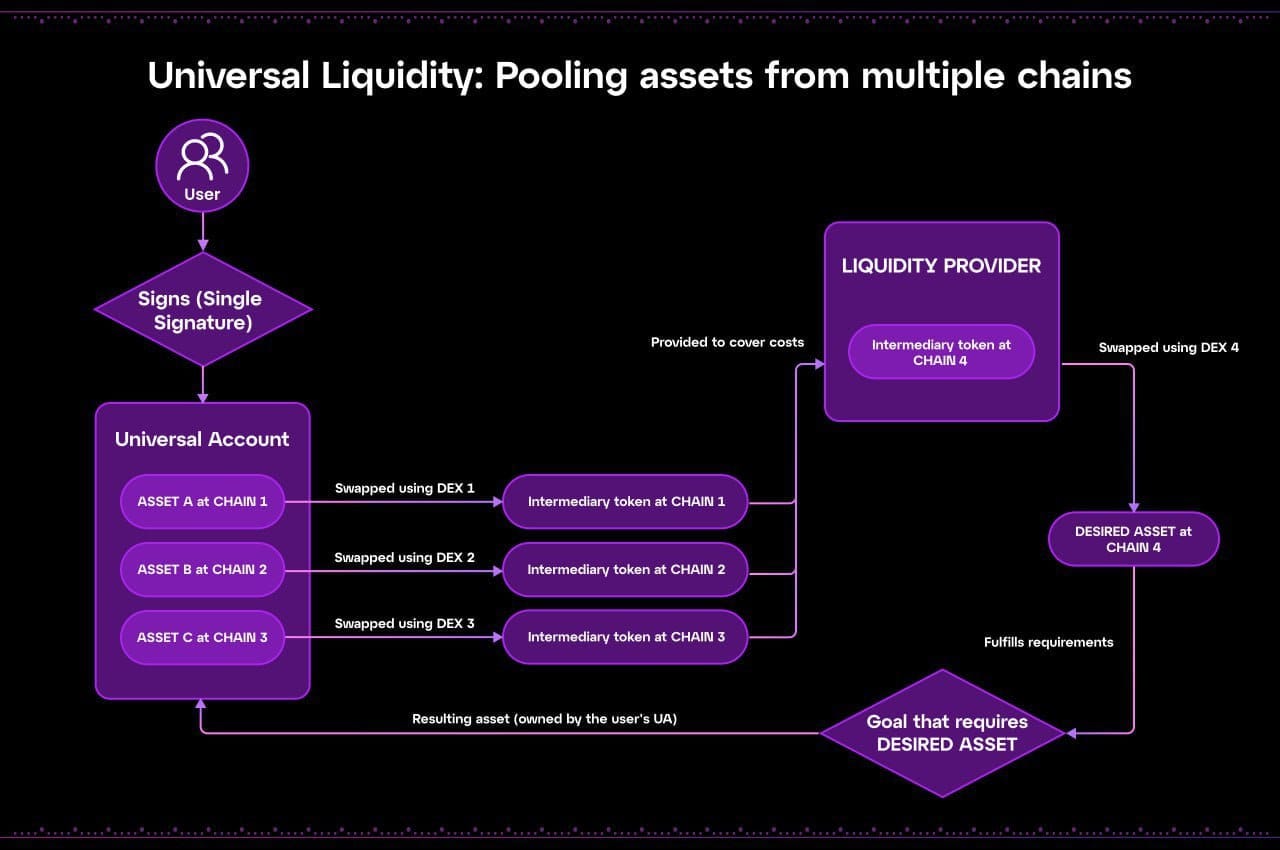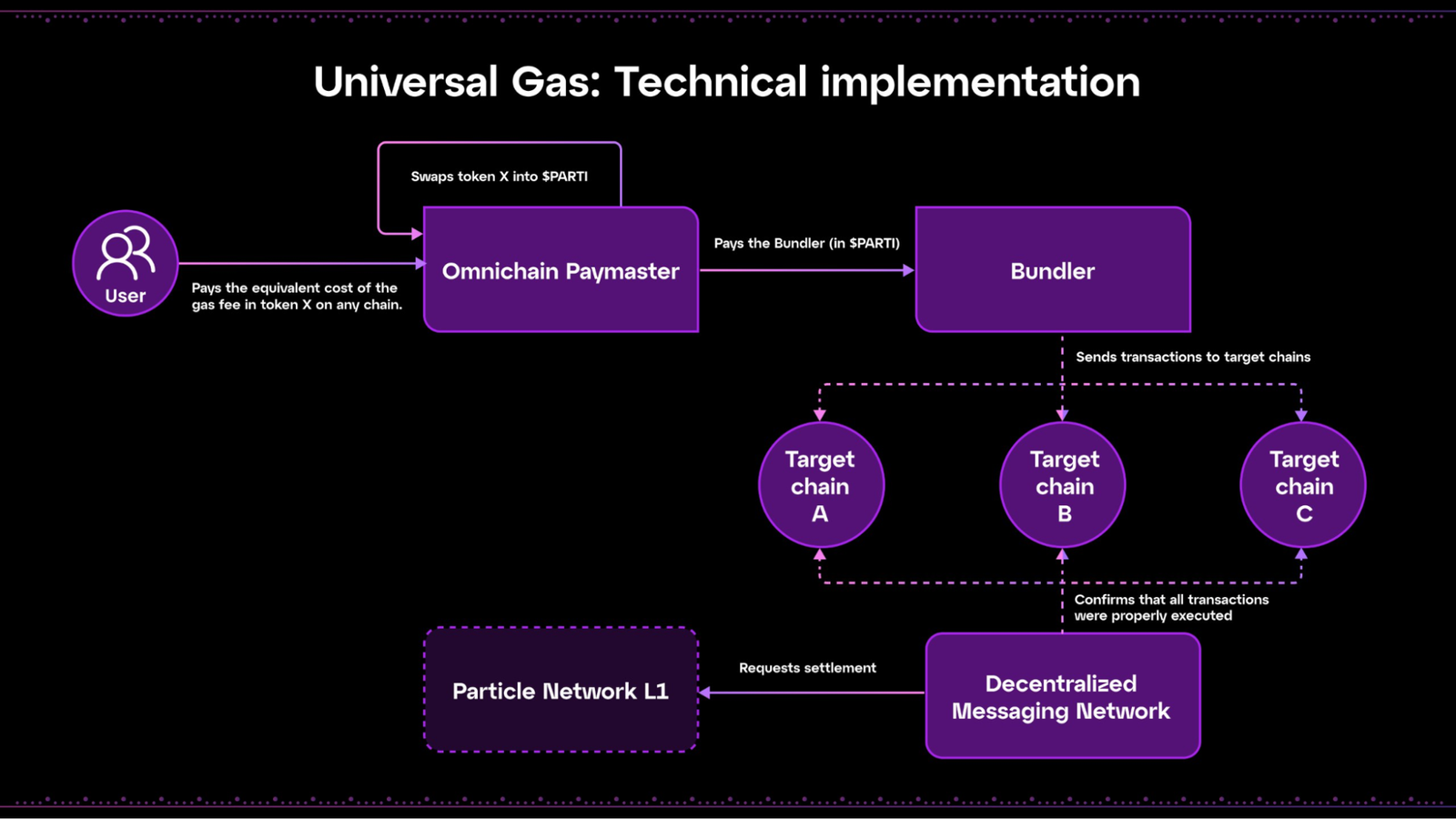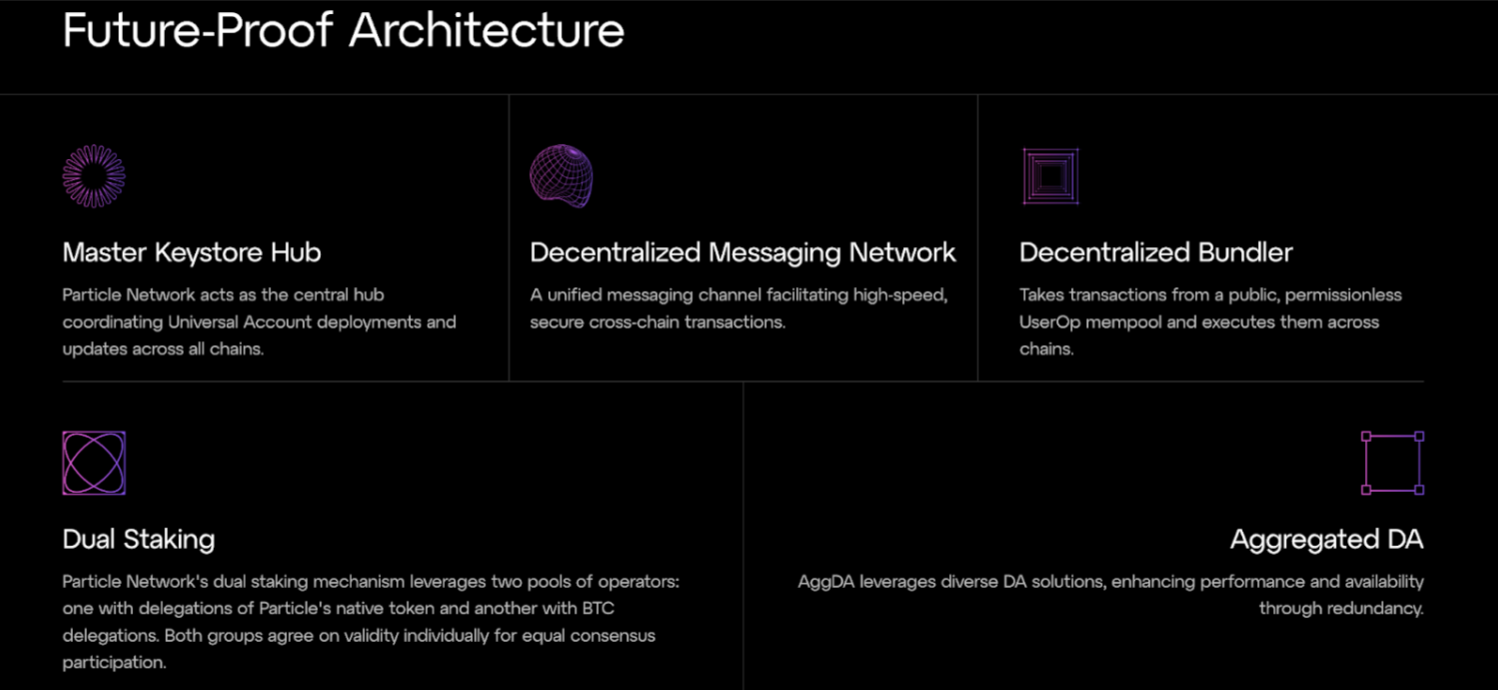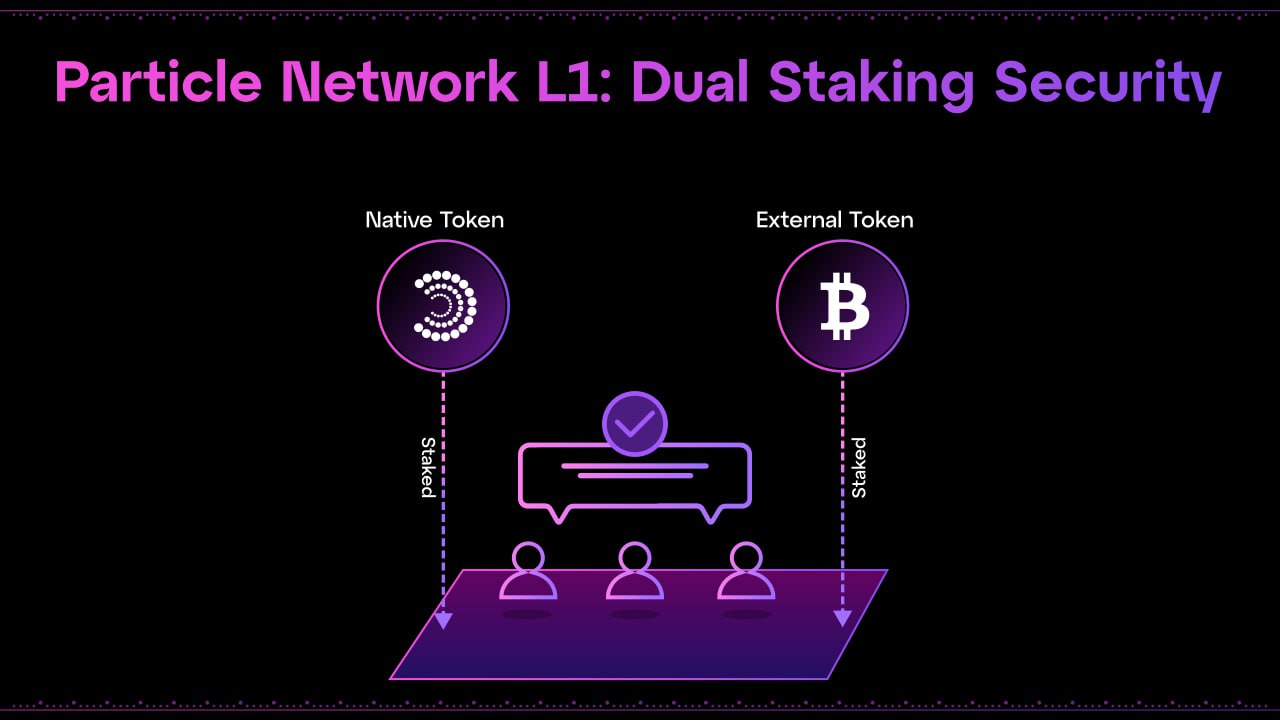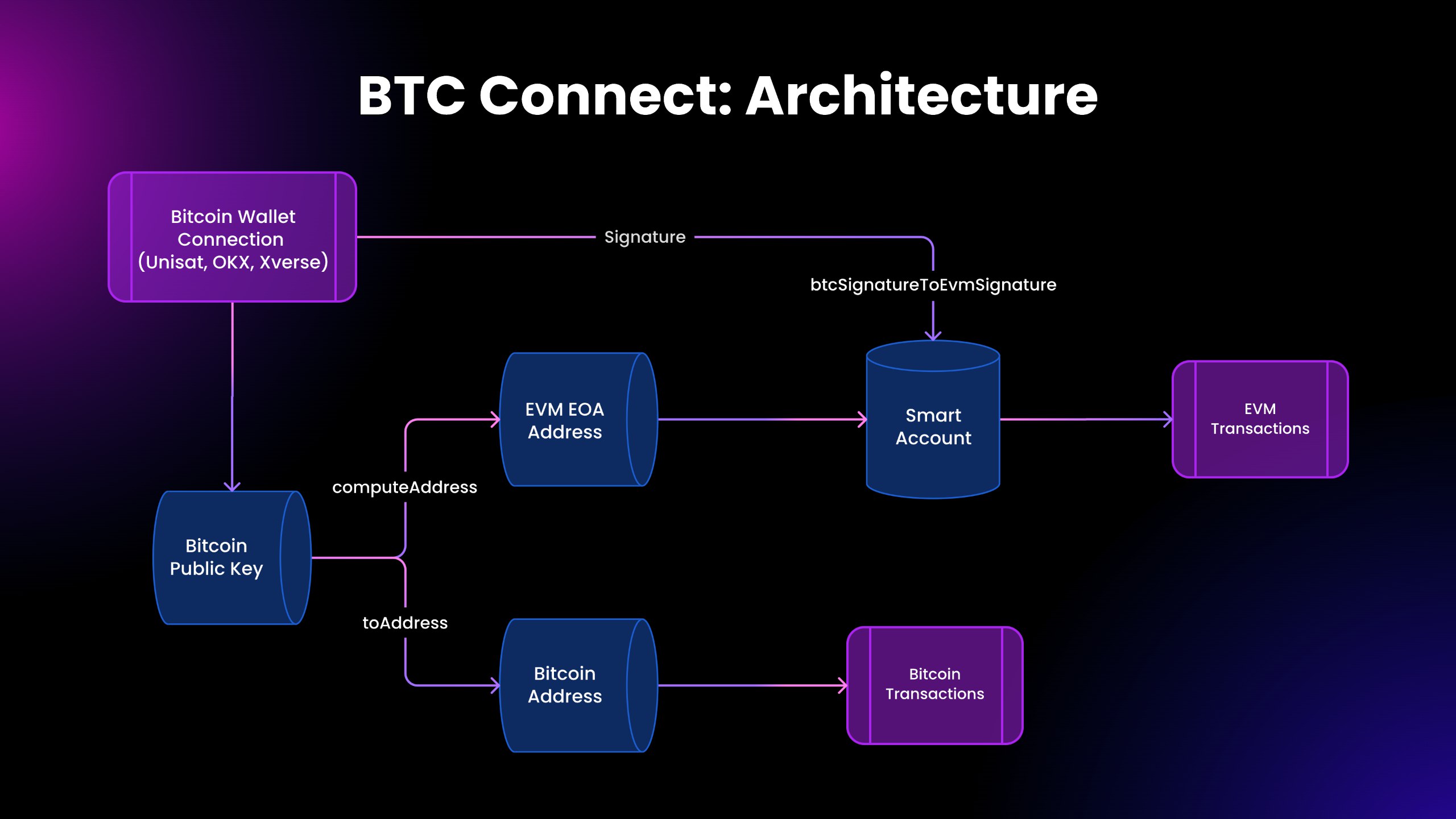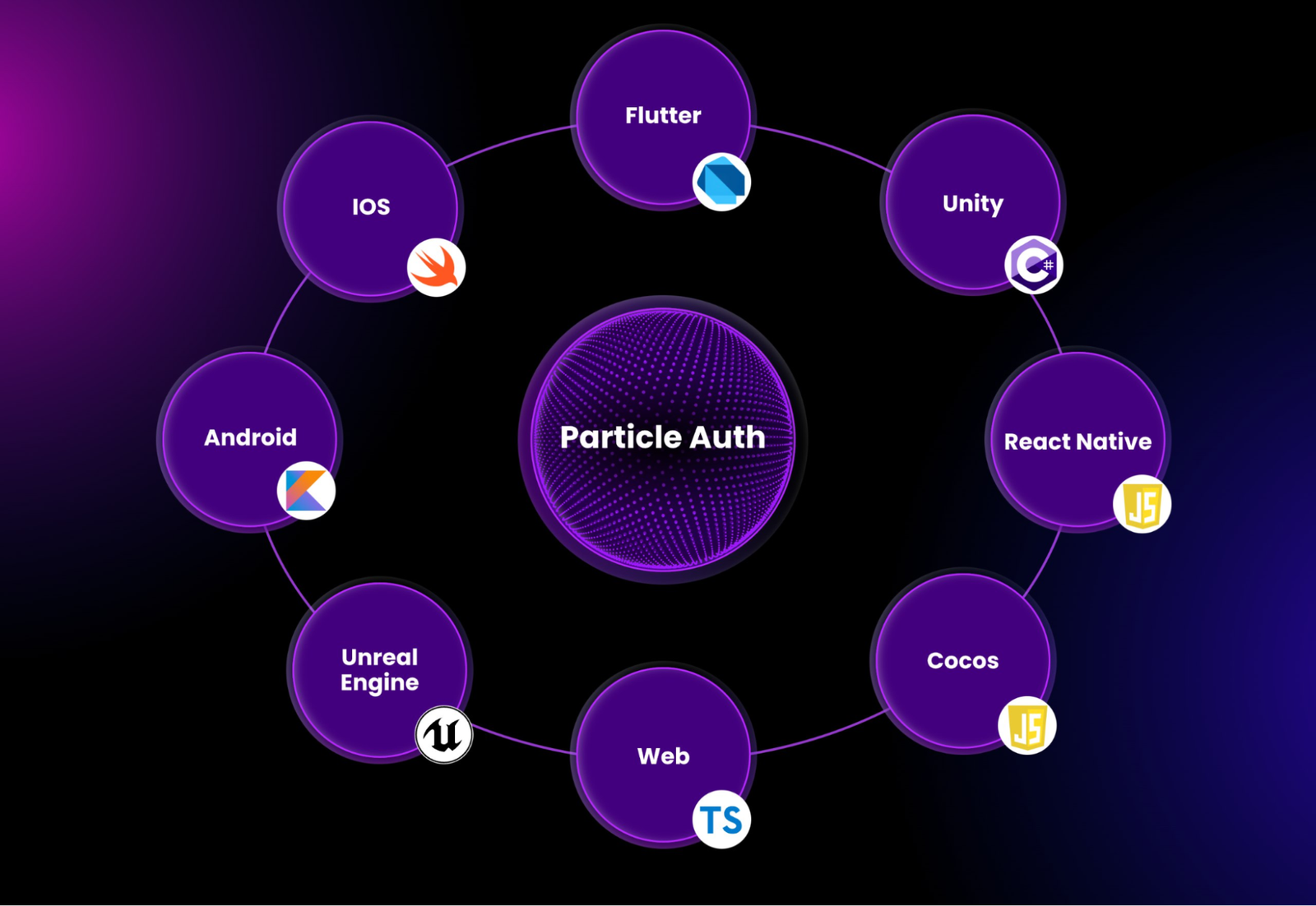Introduction
As the blockchain industry continues to grow, the concept of Chain Abstraction (ChA) has emerged as a crucial solution to manage the complexities associated with a multi-chain, modular future. Chain abstraction refers to the process of simplifying user interactions with multiple chains by hiding the intricate details of these networks from the end user as a default solution (with power users still having the ability to access information about the chains they are using). The goal is to provide a seamless and intuitive user experience (UX), regardless of the underlying blockchain or infrastructure accessed by end users. Even though there can be nuances in how each project refers to Chain Abstraction, all of them share the notion that in order for crypto to achieve mass adoption, it is imperative to close the existing gap in UX, making Web3 interactions as close to Web2 as possible.
Let’s consider email services, such as Gmail or Outlook, as an example. When you send an email, the process is incredibly simple and intuitive: you type your message, enter the recipient’s address, and hit “send.” The interface is user-friendly, and the whole process feels instantaneous.
However, beneath this simplicity lies a complex web infrastructure:
When you send an email, it’s routed through Simple Mail Transfer Protocol (SMTP) servers that determine the path your email will take to reach the recipient’s server.
Protocols like IMAP or POP3 manage how emails are fetched and stored from the mail server to your device, enabling the receipt of emails. The recipient’s email domain is resolved through Domain Name System (DNS) queries to find the correct server. We could also talk about the encryption protocols (such as TLS) used to secure transmission or the spam filters, but the concept is quite clear now: despite these intricate processes, users don’t need to understand or even be aware of them. The email service handles all these details behind the scenes, allowing users to focus solely on composing and sending their messages. This simplicity and abstraction are what make email accessible to everyone, from tech-savvy individuals to those who are less familiar with technology.
Similarly, in the context of blockchain and crypto, the goal is to provide users with a simple, unified interface abstracting away the complexities of multiple networks, tokens, and transaction processes, just like how email services abstract away the complexities of internet communication.
This becomes increasingly important when we consider the current growth rate and rapid proliferation of new L1 and L2 solutions (fostered by Ethereum’s rollup-centric approach, the increasingly modular nature of projects, and the emergence of new infrastructures which are highly performant but not natively compatible with EVMs). While efficient in distributing blockspace, the current multichain paradigm fragments both users and liquidity, forcing them to split their funds across several chains (sometimes with different addresses and wallets, if one interacts with ecosystems other than Ethereum’s).
Figure 1: Liquidity fragmentation across blockchain networks
Source: Thanefield Capital Research
And the situation is even more worrying when viewed in the light of the huge investments made in the crypto field by VCs and the exponential growth in the number of users.
Figure 2: The amount of investment made and the growth of the user base within the crypto space
Source: Particle Network’s official blog
Even if all the complexities are hidden from the user, this does not necessarily mean that they do not exist. There are multiple aspects on which a protocol has to work in order to offer a true chain abstraction service, ranging from intent expression or the handling of user-requested operations between chains and their relative settlement.
Since this is a very broad topic, the approach taken by different protocols has been much varied but can essentially be splitted into 3 subcategories:
- Full stack or comprehensive solutions with all-encompassing approaches to CA and that aim to provide a seamless, integrated user experience across multiple networks.
- Orchestration solutions that coordinate the management and execution of the cross-chain workflow and offer the same outcome as the former but with a different integration depth.
- Foundational solutions. which are limited to one or some component of the overall architecture, but enable the functioning of the others.
Figure 3: Chain abstraction: integration depth
Source: Particle Network official blog
The type of classification outlined above is not exhaustive because it reflects only one of many observation angles of the overall phenomenon, but can help to understand where Particle fits in the galaxy of protocols working on the implementation of chain abstraction in terms of the integration depth of the stack in the different areas of Web3.
For a more technical and “layered” approach to the topic, it is worth consulting both the CAKE Framework published by Frontier Research and the multi-layer framework outlined by the Particle team.
Figure 4: Different frameworks to categorize chain abstraction related projects
Source: Frontier research and Particle blog
The problem: User and Liquidity Fragmentation.
The ever-increasing number of alternative Layer 1s, Ethereum L2s, and appchains is a consequence of the evolutionary path followed by the crypto industry over the past few years. While diversity provides users with greater freedom of choice, it also brings challenges and complexity for both devs and users who operate across multiple chains. The proliferation of chains fragments liquidity and usage, creating a worse user experience and hampering development.
Even if innovation is to be considered the main cause of the exponential increase in the supply of new infrastructure, the unwise allocation of resources resulting from fragmentation might ultimately hamper mass adoption. Consider a world where multiple infrastructure providers come up with their incentive structures to drive usage to their own chain, competing against everyone else as a result. This is clearly a blocker for mass adoption, even if each of them is addressing the scalability trilemma in unique ways. Ultimately, each chain comes with their own native token and most of them end up competing for the same user base. As a result, developers must carefully evaluate the type of stack to build up on, often more on the basis of the potential profitability of extra incentive campaigns than on the quality or the main features of the underlying infrastructure, further contributing to liquidity and user fragmentation.
Another key step in the evolutionary path leading to this fragmented landscape is the introduction of the concept of modularity, first introduced by Mustafa Al-Bassam in 2019 in the paper “LazyLedger: A Distributed Data Availability Ledger with Client-Side Smart Contracts”, proposes separating network consensus and Data Availability (DA) from transaction settlement and execution. Rather than having a monolithic structure performing multiple different functions, modularity fosters specialization and modality as a means of improving scalability, but also significantly reducing entry barriers for new infrastructure deployment.
As per Vitalik Buterin’s Endgame Roadmap proposed on 2 October 2020, Ethereum would be pursuing a rollup-centric roadmap, where modularity plays a critical role. However, the recent proliferation of too many L2s has unfortunately further exacerbated both users and liquidity fragmentation. Ethereum aims to become the global financial coordination and settlement layer, and this massive goal requires scalability. Rollups enhance transaction throughput and reduce costs by bundling multiple transactions into one batch for submission to the Ethereum mainnet, minimizing on-chain data processing. However, as rollups proliferate, interacting with the Ethereum ecosystem becomes more complex, necessitating additional infrastructure to connect rollups to each other as well as with the L1.
To remedy this UX drift, it is first imperative to identify the problem by placing ourselves in the perspective of a new user and asking what they hope to find, what they should find and what they actually find in DeFi today.
Figure 5: UX: User expectations, crypto industry goals, the current state
Source: Revelo Intel
The answer: Chain Abstraction
Web3’s fragmentation has spurred the development of Chain Abstraction, where the goal is to provide crypto users with a better experience, unhampered by bridging complexities, gas payments, complex UIs and multi-chain wallet management.
Chain abstraction addresses the most glaring inefficiencies within Web3 by creating an ecosystem where applications are accessible from any blockchain, focusing competition on the quality of service and technology rather than redundant product development. This approach allows users to seamlessly interact with decentralized applications without the need for complex cross-chain activities or managing multiple gas units.
Key benefits include:
- Simplified User Experience: integrated cross-chain processes and a unified balance across chains reduce cognitive load and management overhead.
- Enhanced Accessibility: users can access any dApp on any chain, reducing barriers and boosting the utility of decentralized products.
- Increased Competitiveness: decentralized products become more competitive against centralized alternatives, offering full asset control without third-party reliance.
- Greater Growth Potential: applications can easily capture users across different chains, leading to broader adoption and growth beyond their original deployment chain.
- Resource Efficiency: by reducing repetitive development and maintenance, developers can focus more on innovation and creativity rather than putting effort into duplicating the same product on different infrastructures.
As we saw previously, efforts to achieve CA range from comprehensive solutions (which include, e.g.,Polygon’s AggLayer, Particle Network, the OP Superchain, Near’s Chain Signature, and Zksync 3.0 (i.e. the Elastic chain), to single-component solutions, such as intent networks and bridging aggregators.
A significant challenge with chain abstraction has ironically been the fragmentation of its solutions. Often, these solutions attempt to dominate the abstracted chain. For instance, both Polygon’s AggLayer and Zksync 3.0 aim to address rollup fragmentation by unifying liquidity, messaging, and bridging. However, these solutions require chains to opt-in to using their dedicated technology stack, leading to incentive misalignment, as chains typically prefer to control their own stacks.
Additionally, these solutions often do not integrate well with each other. While rollups on Polygon’s AggLayer benefit from unified liquidity and those on the Superchain from unified messaging, users still face a poor UX when interacting with both simultaneously. The fragmentation of some abstraction solutions, especially at the component level, poses another issue.
Chain Abstraction is a multifaceted challenge that can be tackled from various observation angles, both in terms of the issues to be resolved and the methods to address them.
Significant efforts have been made by several crypto search firms to outline collaborative approaches to chain abstraction, notably the CAKE Framework by Frontier Research, which splits the whole topic into specific infrastructure layers: the permission layer, the solver layer, and the settlement layer.
- The permission layer involves users connecting their wallets to protocols and applications, submitting their intents, and signing messages. It recognizes the user’s assets balance and executes transactions.
- The solver level includes solvers and anyone who provides quotes and meets users’ intentions based on estimated fees and execution speed.
- The settlement layer ensures transaction completion, bridging assets to different chains if necessary and executing the transaction.
Although the model outlined above is probably the most detailed, it doesn’t lend itself much to user comprehension and is rather a guideline for developers interested in building up on this topic. That is why it is advisable to adopt a more pragmatic approach, which categorizes chain abstraction solutions into two broad categories: comprehensive solutions and component solutions, each with further subcategories.
Figure 6: Overview of projects working on chain abstraction
Source: Revelo Intel
Another CA solution at the account level: NEAR
NEAR’s Chain signatures enable transactions across multiple blockchains and allow users to pay gas fees using the Multichain Gas Relayer (MGR), simplifying the management of different native tokens for transaction fees.
Key Benefits of the Multichain Gas Relayer:
- Simplified Transactions: eliminates the need for multiple gas tokens, streamlining cross-chain activities.
- Enhanced Accessibility: reduces entry barriers, encouraging more users to engage in cross-chain transactions.
- Support for Non-EVM Chains: extends to non-EVM chains, broadening NEAR token utility.
Chain Signatures introduce a form of multichain Account Abstraction (i.e. the Account Abstraction at the account level), allowing a single NEAR account to manage assets and transactions across various chains, similar to ERC-4337 but for non-EVM chains. Initially compatible with Bitcoin, Ethereum, Cosmos, Dogecoin, and Ripple, it will support Solana, Polkadot, TON Network, and many more chains in the future.
Figure 7: NEAR’s Account Aggregation transactions flow
Source: NEAR docs
NEAR’s Account Abstraction stack is essentially built on three key technologies:
Figure 8: NEAR’s Account Aggregation key features
Source: Revelo Intel
The solution implemented by NEAR thus offers a full stack chain abstraction service at the account level (also called account aggregation) via MPC nodes.
A CA model at the blockchain-level: Polygon’s AggLayer
Polygon’s AggLayer is designed to provide seamless cross-chain interoperability and unified liquidity through a decentralized protocol composed of a common bridge and a ZK-powered mechanism. This enables chains connected to the AggLayer to remain sovereign while offering a user experience comparable to monolithic chains.
Ethereum Layer 2 scaling solutions, such as rollups, typically rely on a canonical bridge with Ethereum. This setup causes user funds bridged from Ethereum to an L2 to be stored in the bridge contract, leading to interoperability issues and lengthy, costly withdrawal processes.
To move assets from one Eth rollup (e.g., Manta) to another (e.g., Base), users must undergo a 7-day withdrawal process from Manta to Ethereum before transferring from Ethereum to Base, due to the time required for optimistic fault/fraud proof disputes.
AggLayer simplifies this process by utilizing a unified bridge contract shared across multiple chains. This allows for unified liquidity and seamless cross-chain transactions.
AggLayer aggregates zero-knowledge (ZK) proofs from connected chains, facilitating cross-chain transactions. For example, if a user wants to move $USDT from Canto to Astar, a ZK proof is posted to the AggLayer, unlocking the corresponding amount of liquidity on Astar.
Figure 9: The Unified Bridge’s workflow
Source: polygon’ official blog
The infrastructure implemented by Polygon basically relies on three key elements: the Polygon Network, AggLayer (Unified Liquidity), and Polygon CDK (Scaling).
Figure 10: Polygon infrastructure key elements
Source: Revelo Intel
The whole process of integrating and utilizing these elements occurs in three distinct stages. In the pre-confirmation stage, chain A submits a block header to the AggLayer along with a light client proof, initiating the verification process. During the confirmation stage, either chain A or a full node generates a proof for the block, which is then verified by the AggLayer. Finally, in the finalization stage, the proof is aggregated with other batches and posted to Ethereum, ensuring secure and reliable transaction validation.
The benefits of the AggLayer are manifold. It enables seamless cross-chain communication, allowing for near-instant cross-chain transactions that significantly enhance operational efficiency. The unified liquidity provided by the AggLayer creates a shared liquidity pool across all connected chains, optimizing resource utilization and enhancing transactional fluidity. Additionally, the improved user experience is akin to interacting with a Web2-like interface, making blockchain technology more accessible and user-friendly for a broader audience. This holistic approach by Polygon not only addresses the complexities of cross-chain interactions but also fosters a more integrated and efficient blockchain ecosystem.
Figure 11: Main benefits of the AggLayer
Source: Polygon Technology
Polygon therefore offers a comprehensive but not chain agnostic chain abstraction service solution that aims to unifies liquidity across a multi-chain network of CDK L2 by aggregating proofs from all connected chains, and ensuring safety for near-instant, atomic cross-chain transactions.
Particle’s approach to Chain Abstraction
Particle Network is a modular Layer 1 (L1) blockchain designed to unify multiple chains through Universal Accounts, addressing the fragmentation of users and liquidity.
Universal Accounts offer users several key benefits.
- Simplified multi-chain management: Universal Accounts provide users with a single address and balance that works seamlessly across multiple blockchain networks, eliminating the need for managing multiple wallets and addresses.
- Unified User Interface: users can interact with both EVM and non-EVM blockchains through a single, consistent interface, making it easier to manage and utilize assets across different ecosystems.
- Automatic cross-chain transactions: Universal Accounts leverage Particle’s Universal Liquidity technology to automatically handle cross-chain transactions, pooling funds from various chains to meet the requirements of each operation, all with a single signature.
- Enhanced Flexibility: Universal Accounts can be linked to and signed by an existing Externally Owned Address (EOA), providing users with a seamless connection to various applications and services that use Particle’s SDK.
- Efficient Settlement: Particle Network’s L1 acts as a settlement layer for transactions, ensuring that cross-chain operations are coordinated and executed efficiently, reducing the complexity and potential human errors in multi-chain interactions.
Addressing Fragmentation in Web3
The Web3 ecosystem is highly fragmented, with users and liquidity dispersed across various isolated blockchain networks. This fragmentation leads to several inefficiencies:
- Technological Inefficiencies: incompatible blockchain networks require redundant development efforts and create barriers to a seamless user experience.
- Incentive Inefficiencies: the rapid proliferation of new chains diverts significant funds to bootstrap these ecosystems, often without yielding proportional returns in user adoption or ecosystem vitality.
- Ecosystem Inefficiencies: developers repeatedly create similar foundational products (e.g., AMM DEXs, lending markets) across multiple platforms, stifling creativity and innovation.
Particle Network’s chain abstraction approach simplifies the user experience by allowing interaction with multiple blockchain products and assets without dealing with multi-chain complexities. It integrates functionalities such as Universal Accounts, liquidity, and gas management, enabling users to perform transactions across chains using a single wallet and balance, even allowing users to pay for transactions using any token they wish, from any network.
Why Particle?
One of the best trade-offs between usability and security.
Particle’s approach to chain abstraction offers an optimal balance between usability and security for several reasons:
User-Friendly Design. Particle’s Universal Accounts provide a seamless user experience across multiple blockchains. Users interact with a single, unified account that consolidates assets and transactions from various chains, eliminating the need to manage multiple wallets or perform complex cross-chain operations manually.
Users can easily create and manage their accounts using familiar methods, such as social logins, while still benefiting from the full functionality of a blockchain wallet. This reduces the learning curve for new users and makes interacting with decentralized applications (dApps) more accessible.
Advanced Security Mechanisms. For users who opt for social logins, Particle employs advanced security mechanisms like Multi-Party Computation with Threshold Signature Scheme (MPC-TSS), which ensures private keys are never fully exposed. Continuous key refresh and decentralized state management further enhance security, preventing single points of failure.
Effective Chain Abstraction. Particle abstracts away the complexities of interacting with multiple blockchains, allowing users to manage their assets and perform transactions without worrying about the underlying chain-specific details. This not only improves usability but also minimizes the potential for user errors, which are common in more complex, manual cross-chain interactions.
Particle’s infrastructure is also designed to be modular and scalable, making it easy to integrate with new blockchains and expand functionality. This ensures that the system can grow and adapt without compromising either usability or security.
Balanced Approach. Particle strikes a balance by providing robust security features without making the user experience cumbersome. While some blockchain solutions may prioritize security at the expense of ease of use, Particle achieves both by leveraging advanced cryptographic techniques and a well-designed user interface.
Key Takeaways
- Background: The history of Particle is intimately linked to the topic of simplifying user interaction with the overall web3 ecosystem. Originally, it launched as a Wallet as a Service (WaaS) provider focused on Account Abstraction (AA), allowing users to create smart contract wallets connected to their Web2 social accounts, which could then be seamlessly used within dApp interfaces. Since inception, the protocol has broadened its range of services, offering a flagship Chain Abstraction (CA) product: Universal Accounts.
- User-centric design: Particle’s approach to chain abstraction is aimed at breaking down technological barriers and cognitive overhead for users by offering an all-encompassing infrastructure that is flexible enough to adapt to the growing number of chains and changing workloads on them.
- Chain-agnostic approach: The Universal Accounts developed by Particle are designed to operate seamlessly across multiple blockchains without being tied to any specific one. This core feature is powered by Particle’s Cosmos SDK-based Layer-1 (L1) infrastructure, which acts as a coordination layer to coordinate state across different chains. Universal Accounts leverage this L1 layer to synchronize user accounts, transactions, and smart contract interactions across the whole network. While the L1 infrastructure provides centralized state management, the system itself remains decentralized, ensuring that Universal Accounts can easily integrate with new L1s, avoid single points of control or failure, and offer users a consistent and seamless experience across multiple blockchain ecosystems.
- Chain Abstraction at the Account level: Particle’s design implements Chain Abstraction at the account level, ensuring streamlined user interactions across multiple chains. Universal Accounts, which are smart contract wallets, offer this seamless experience and are applicable to any account, including obviously those generated through Particle’s social login service.
For users who opt to use the social login service, Particle ensures secure management of Private Keys (PKs) through a Multi-Party Computation with Threshold Signature Scheme (MPC-TSS) mechanism. In this specific context, Particle’s 2/2 TSS approach distributes key shares between the user and Particle’s environment, performing cryptographic operations without ever combining the shares. To add an extra layer of security, a Master Password encrypts the user’s local key fragment. Additionally, the system regularly refreshes key shares, further enhancing security and making attacks nearly impossible.
While Universal Accounts can integrate with this MPC-TSS mechanism, they are versatile smart contract wallets that can be applied to any account, whether generated through the social login service or other means. This flexibility allows users to benefit from the robust security and usability of Universal Accounts across a broad range of blockchain interactions.
Background
Particle Network takes the lead in the broader category of chain abstraction through its universal accounts, which streamline multi-chain interactions by offering a unified interface and balance across all supported blockchains.
Universal Accounts are built on an Omnichain Smart Contract Wallet architecture that splits code logic from state storage, allowing centralized state management across chains. The Master Keystore Hub ensures synchronization across all instances, with updates managed by Particle’s Relayer nodes, maintaining state consistency in a decentralized environment. Put simply, Universal Accounts are specialized Smart Contract Wallets that aggregate token balances and enable seamless cross-chain transactions, allowing users to pay gas fees in any token they wish and effortlessly execute cross-chain transactions, like purchasing a $TOKEN or/and an NFT on a specific chain with assets pooled from different chains through Particle’s Universal Liquidity system.
Figure 12: Particle network overview
Source: Particle Network’s official documentation
Particle was founded in 2022 by Pengyu Wang (co-founder and CEO) and Tao Pan (co-founder and CTO). Both co-founders have previous experience within the mobile game development industry. The protocol is now being developed by a globally distributed team of 30+ employees, and it has already landed meaningful partnerships with over 60 blockchain ecosystems, including Berachain, Avalanche, Arbitrum, and zkSync, to support Universal Accounts and many more are planned in the future (such as Taiko, Sei, Linea, Near, Mantle, etc).
The project was initially introduced to the market as a Wallet as a Service (WaaS) provider with embedded Account Abstraction (AA) that allowed users to create smart wallets linked to their social credentials. They could then login with existing credentials to start interacting seamlessly with dApp interfaces. Their Wallet Abstraction (WA) modular stack now supports over 60 chains and is used by more than 900 dApps, securing over $2B in assets.
With the introduction of ERC-4337 Account Abstraction (AA), Particle integrated a comprehensive AA stack and launched BTC Connect, bringing ERC-4337 AA to the Bitcoin ecosystem and reaching over 17 million users with 10 million AA transactions. As a natural response to an ever-expanding Web3 ecosystem, Particle Network has increased the spectrum of services offered far beyond the wallet function, evolving into a modular layer-1 (L1) network that facilitates chain abstraction through key features such as Universal Accounts, Universal Liquidity and Universal Gas.
Figure 13: Particle Network’s updated key metrics
Source: Particle Network official website
The long-term vision is and always has been to simplify and unify the user experience, removing all forms of fragmentation and technical complexity related to the web3 world in order to capture the web2 user base, i.e. a truly huge Total Addressable Market (TAM).
Particle foresees a future where users can effortlessly execute transactions across various networks using a single account, with the flexibility to pay gas fees in any token they choose.
The modular Layer 1 will act as a decentralized coordination hub for this multi-chain ecosystem, integrating users and liquidity across both EVM and non-EVM platforms.
In June 2024 Particle Network successfully secured $15 million to advance its vision of chain abstraction through a funding round led by Spartan and Gumi, with participation by other leading industry VCs such as SevenX Ventures, Morningstar Ventures, HashKey Capital, MH Ventures, UOB Venture Management, Flow Traders, ZeroSevenOne Labs, and SNZ.
Figure 14: The latest investment round on Particle
Source: Crypto Rank official X profile
This round follows a previous 7 million round funded by prestigious backers like Animoca Ventures, LongHash Ventures and Alibaba Group, among others, which was in turn preceded by a 1.8 million pre-seed funding round in April 2022.
The total raised thus amounts to 25 million, to which must be added the capital sum invested by Binance shortly after the last Serie A round.
Figure 15: Particle Network – Funding rounds
Source: tracxn.com
Particle Core Technology
1. Universal Accounts
Universal Accounts are one of 3 key functionalities implemented by Particle through its modular L1 to offer users a full stack chain abstraction service.
Figure 16: the flow of user actions on particle universal accounts
Source: Particle official docs
Universal Accounts provide a single, unified interface for users, merging numerous blockchain interactions into one seamless experience with one address and balance across all supported blockchains (both EVM and non-EVM). They utilize Universal Liquidity technology to handle atomic cross-chain transactions, allowing users to maintain a single balance usable anywhere, and are implemented as ERC-4337 smart accounts linked to an Externally Owned Address (EOA), supporting various login methods, including social login through multiple service providers, in addition to traditional Web3 methods.
Figure 17: Composition of Universal Accounts
Source: Particle Network documentation
2. Universal Liquidity
Universal Liquidity is the second key functionality introduced by Particle, serving as a foundational component of Particle’s infrastructure. It enables users to perform transactions across any supported chain, regardless of where their funds are held. This functionality unifies the user experience by consolidating all assets into a single, seamless balance, allowing for smooth and efficient interactions across multiple blockchain environments.
Figure 18: Universal Liquidity enables different assets to be accessed from many chains
Source: Particle official blog
It automatically pulls the required liquidity from the user’s balance on other chains if the user has no funds on them and coordinates and settles cross-chain transactions. This allows users to utilize a universal balance that can be accessed and spent on any integrated blockchain.
3. Universal Gas
Universal Gas is the third and final functionality introduced by Particle, acting as a solving solution to the complexities of gas payments.
Figure 19: Gas Abstraction Module
Source: Particle’s official blog
Gas abstraction is designed to hide the technical complexities of gas payment across different network designs, allowing users to pay transaction fees with any token they want from any supported chain. This streamlines the transaction process by eliminating the need to manage various gas tokens, and integrates with Universal Accounts for seamless cross-chain transactions.
Protocol Architecture
Figure 20: Particle’s infrastructure is future-resistant
Source: Particle’s official website
Particle Network’s modular L1 architecture divides its design into distinct compartments, decentralizing and outsourcing some strategic duties to external parties. Modular Nodes power the network’s fundamental functions.
Key Modules:
- Master Keystore Hub: coordinates smart contract deployments and updates across all networks. It automatically synchronizes settings such as modules and signers between each Universal Account instance, ensuring uniformity and state parity across different chains.
- Decentralized Messaging Network (DMN): monitors and settles the overall execution status on Particle Network’s L1, ensuring accurate and timely updates of user activities across different chains.
- Decentralized Bundler: processes high-volume, cross-chain UserOperations.
Dual Staking Mechanism (DSM)
Particle Network introduces a Dual Staking Mechanism (DSM) to bolster security and incentivize network participation across its ecosystem. This mechanism allows users to stake tokens in two distinct pools, each serving a unique function within the network: the Security Pool and the Liquidity Pool.
Figure 21: Particle’s Dual Staking Mechanism
Source: Particle Network’s official blog
Security Pool: Users can stake their tokens in the Security Pool to contribute directly to the network’s overall security. This pool underpins the integrity of cross-chain transactions and the maintenance of consistent states across Universal Accounts. Stakers in this pool are rewarded for their role in enhancing the network’s defense against potential malicious attacks and ensuring stable operations. The Security Pool also plays a crucial role in maintaining the trustless nature of the network by providing a decentralized layer of security which mitigates risks associated with single points of failure.
Liquidity Pool: The Liquidity Pool is designed to support Particle’s Universal Liquidity mechanism. By staking tokens in this pool, users provide the necessary liquidity to facilitate seamless and efficient cross-chain transactions. This pool ensures that there is always enough liquidity to execute atomic cross-chain operations, thereby maintaining smooth and uninterrupted transaction flows across the network. Stakers in the Liquidity Pool are rewarded based on their contribution to the network’s liquidity, which is crucial for optimizing transaction speed and minimizing slippage.
The Dual Staking Mechanism not only incentivizes users to participate actively in securing and maintaining the network but also enhances the overall efficiency and reliability of Particle Network’s operations. By segregating staking functions into two specialized pools, Particle Network maximizes resource allocation, ensuring that both security and liquidity are robustly supported, thereby reinforcing the network’s resilience and scalability.
Aggregated Data Availability (AggDA)
Particle Network enhances its Data Availability (DA) component by outsourcing it to multiple qualified providers, including Celestia, Avail, and NEAR DA. This strategy significantly boosts security and operational stability while maintaining a consistent state across every Universal Account.
One of the key advantages of this approach is enhanced security and stability. By utilizing multiple DA providers, Particle Network ensures that data handling is both secure and stable, reducing the risk of data breaches or operational failures. This multi-provider strategy also increases redundancy and efficiency. It guarantees that critical data remains accessible at all times, even if one provider encounters issues, and optimizes resource use by efficiently managing data distribution and storage.
Moreover, the decentralization achieved through this method distributes data across various independent platforms. This not only aligns with the core principles of blockchain technology but also enhances the network’s resilience by avoiding reliance on a single provider. By distributing data, Particle Network strengthens its overall infrastructure, ensuring robust performance and reliability in handling cross-chain transactions and maintaining consistent states across its ecosystem.
Other infrastructure building blocks: Particle Network’s Bundler and Omnichain Paymaster
Particle Network’s Bundler and Omnichain Paymaster are key components of its advanced Web3 infrastructure, designed to streamline transaction processing and gas management across EVM networks. The Particle Bundler aggregates UserOperations from a specialized mempool, bundles them, and submits them as a single transaction, ensuring smooth and efficient processing. It offers features like Smart Account Nonce management, automatic batch sending, and Smart Ops configurations, enhancing operational reliability and performance. The Bundler supports multi-chain operations, concurrent UserOperations, and includes a Gas Price Oracle, making it a robust tool for developers seeking optimized and secure transaction handling.
The Omnichain Paymaster simplifies multi-chain gas payments by allowing developers to sponsor UserOperations across EVM-compatible chains using stablecoins like $USDT. It offers flexible sponsorship logic via webhooks, as well as monitoring and expiration features for enhanced security. Integrated with Particle’s WaaS, the Paymaster ensures swift wallet generation and efficient transaction processing, even under high demand, providing a seamless experience for users and developers alike.
BTC Connect
BTC Connect is the first EVM-compatible ERC-4337 account abstraction protocol designed specifically for the Bitcoin ecosystem. This innovative protocol integrates Bitcoin wallets into the broader EVM ecosystem, thereby enhancing both user experience and functionality.
The design philosophy behind BTC Connect focuses on simplified integration, allowing a Bitcoin wallet to act as the Signer for a smart account on a Bitcoin Layer 2 (L2) or EVM network. This seamless integration ensures that users can utilize their existing Bitcoin wallets to interact with EVM dApps without the need for additional interfaces.
BTC Connect comprises several key components, including Smart Accounts, Paymasters, Bundlers, and a Bitcoin-Specific Wallet Connection Modal. These components work together to facilitate efficient and secure interactions across Bitcoin and EVM platforms.
One of the primary advantages of BTC Connect is its ability to bring the benefits of ERC-4337 Account Abstraction to the Bitcoin ecosystem, allowing native Bitcoin users to connect to EVM-compatible applications without downloading dedicated EVM wallets such as Metamask or Rabby.
Figure 22: BTC connect, transaction flow table
Source: Particle’s official documentation
This integration allows users to leverage the advanced features of Account Abstraction, such as flexible transaction management and enhanced security, while interacting with Bitcoin, which traditionally lacks these capabilities.
By bridging the gap between Bitcoin and the more versatile Ethereum-based infrastructure, BTC Connect enhances the usability and functionality of Bitcoin within Particle’s ecosystem, making it more accessible for developers and users alike.
Wallet Abstraction Stack
Particle Network’s Wallet Abstraction serves as a key innovation providing seamless access to its Universal Accounts. By combining ERC-4337 account abstraction (AA) with advanced wallet solutions, it facilitates dApp integration and enhances developer flexibility. This integration offers a robust framework for incorporating sophisticated Web3 functionalities directly into apps, optimizing both user experience and security.
Particle’s main product, the Modular Smart Wallet-as-a-Service (WaaS), simplifies the integration of blockchain functionalities by providing embedded wallet interfaces. These embedded wallets are particularly useful for accessing simplified wallet interfaces when using features like AA and social logins, which cannot leverage the standard interfaces of traditional wallets like MetaMask, Keplr, and Phantom. This approach allows users to authorize transactions and sign messages directly within the platform they are using, without the need for separate wallet applications.
Key features include Social Logins, allowing users to create or access wallets via social logins, bridging the gap between Web2 and Web3. This simplifies onboarding by bypassing the complexities of private key management and wallet setups. Additionally, Enhanced Security and Autonomy are achieved through Multi-Party Computation Threshold Signature Schemes (MPC-TSS), which divide the signing responsibility among multiple parties. This ensures that no single party possesses or stores the complete private key at any part of the process, distributing risk and enhancing security while maintaining user control over assets.
Particle Network’s approach to Smart WaaS is also distinguished by its native integration of account abstraction, offering a flexible and powerful toolkit for developers. This modular system allows seamless integration of WaaS with AA, regardless of the application’s complexity or backend architecture.
Key Integrations:
- Native AA Integrations: simplifies the use of smart accounts, providing familiar transaction structures, account management, and building processes, all handled by Particle’s SDK.
- Cross-Compatibility: ensures developers are not restricted to a single provider within the ecosystem, allowing for different smart account implementations, Bundlers, or Paymasters that best fit project needs.
At the core of Particle Network’s WaaS lies 2 main components, namely:
- 1. Particle Auth, a self-custodial authentication tool that manages user onboarding through social logins and integrates with existing systems via JWT-based authentication, creating on-chain accounts linked to social identities.
Figure 23: Particle Auth
Source: Particle’s official blog
- 2. Particle Wallet, which complements this by offering an embedded wallet interface that supports accounts from social logins or external Web3 wallets via Particle Connect.
The modular design of Particle’s WaaS stack offers unparalleled flexibility, allowing developers to integrate it across various blockchain environments without extensive modifications. This setup supports extensive customization, enabling brand-specific UI elements and tailored transaction settings. Interoperability with third-party services ensures that developers can build highly personalized, user-friendly Web3 applications.
Particle’s WaaS platform is built with features like fiat ramps for easy onboarding, robust cross-chain bridging, and direct token swaps within the wallet. When combined with a multi-chain support, these features ensure the platform’s adaptability in an evolving blockchain landscape, making it a powerful tool for developers focused on Chain Abstraction and the next generation of Web3 applications.
Conclusion
Particle Network is tackling the critical issues of fragmentation and complexity in Web3 by focusing on Chain Abstraction at the Account level. Through its modular Layer 1 architecture, Particle Network seamlessly integrates multiple blockchains, enabling Universal Accounts to operate as a single, unified interface across different chains. This approach not only simplifies user interactions but also ensures secure, atomic cross-chain transactions, making blockchain technology more user-friendly and efficient.
At the core of this chain abstraction strategy lies Particle’s main innovations: Universal Accounts, Universal Liquidity, and Universal Gas. These components work together to provide users with a consistent and streamlined experience across all supported blockchains, eliminating the need to navigate multiple platforms or manage separate wallets. The Universal Accounts, in particular, leverage these technologies to pool assets and facilitate seamless transactions, all while maintaining high levels of security and efficiency.
In addition, Particle Network’s Wallet-as-a-Service (WaaS) model, with its native support for Account Abstraction, enhances the flexibility and customization available to developers. This enables the creation of applications that are both highly personalized and secure, bridging the gap between the ease of use found in Web2 and the innovative potential of Web3.
In summary, Particle Network’s focus on Chain Abstraction and the enhancement of Universal Accounts positions it as a leading platform in the blockchain space. By addressing the inefficiencies of the current blockchain landscape, Particle Network is paving the way for a more unified, scalable, and user-friendly Web3 future, closing the gap between Web2 and Web3 and setting new standards for user experience across the industry.
References
“The 0-1 of Chain Abstraction” (2024), Shoal Research, published on Substack. Link
“Chain Abstraction Landscape” (2024), ASXN Digital Asset Research firm, published on Substack. Link
“Aggregated Blockchains”, Brendan Farmer, published on Mirror. Link
“Chain Abstraction – The Ultimate User Experience?”, 0xNairolf, published on Substack. Link
“The CAKE Framework”, Frontier Research (Ankit Chiplunkar and Stephane Gosselin). Link
Particle Network official blog. Link
Near Official documentation, namely the chain abstraction section. Link
“Exploring NEAR’s approach to Chain Abstraction”, Reflexivity Research. Link
“Polygon AggLayer: Innovating Multi-chain UX”, 4 pillars. Link
Disclosures
Revelo Intel is engaged in a commercial relationship with Particle Network and this report was commissioned as part of that engagement.
Members of the Revelo Intel team, including those directly involved in the analysis above, may have positions in the tokens discussed.
This content is provided for educational purposes only and does not constitute financial or investment advice. You should do your own research and only invest what you can afford to lose. Revelo Intel is a research platform and not an investment or financial advisor.


